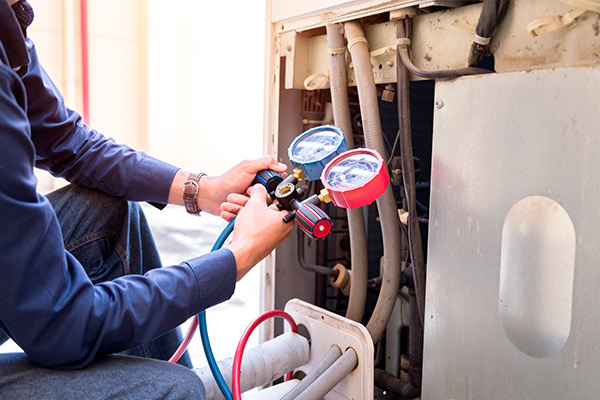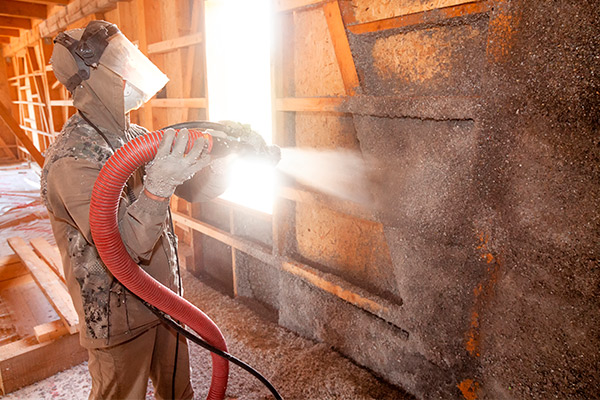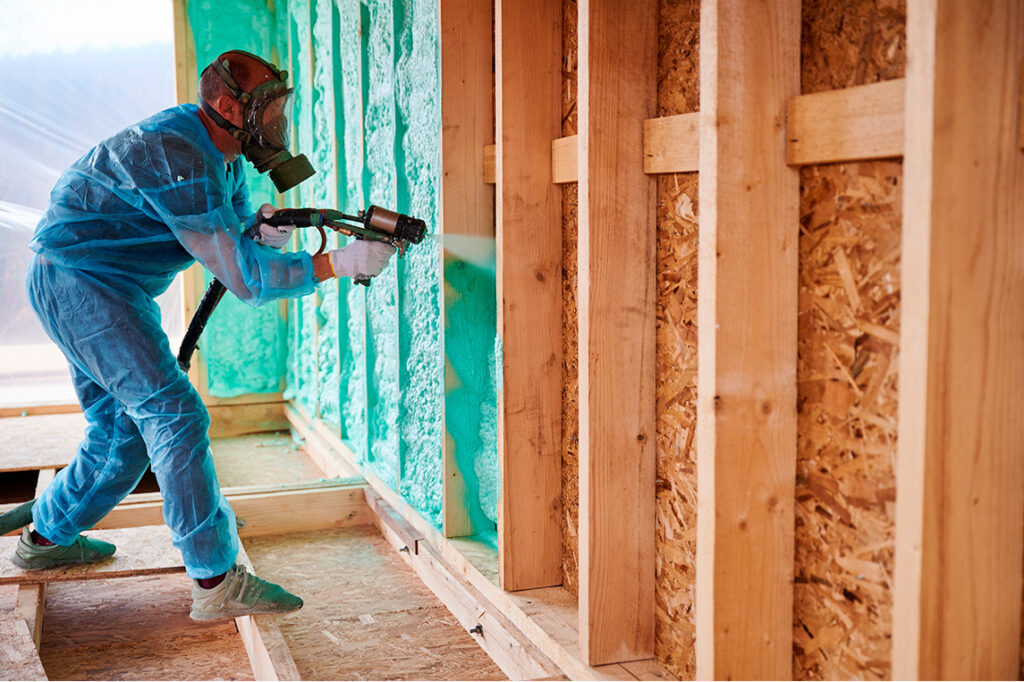In the Rio Grande Valley (RGV), summer heat can push attic temperatures to 150°F–160°F. What many homeowners don’t realize is that while they’re struggling to stay cool indoors, their attics are becoming dangerous heat traps. This kind of heat is destructive to your home, from structural decay to soaring energy bills. Understanding how attic heat creates a ripple effect of damage helps you make informed decisions to protect your home and save money.
This article explores 10 key ways attic heat damages your home; and, most importantly, provides guidelines how to prevent it before it causes irreparable damage.
Shingle Damage and Roof Aging
 Your roof is your home’s first line of defense, but it’s also the most vulnerable to attic heat. When your attic overheats, the shingles above it are baked from both sides. This accelerates the breakdown of asphalt shingles, causing them to:
Your roof is your home’s first line of defense, but it’s also the most vulnerable to attic heat. When your attic overheats, the shingles above it are baked from both sides. This accelerates the breakdown of asphalt shingles, causing them to:
- Crack and lose protective granules
- Curl or blister under thermal stress
- Detach as nails pop out from expansion and contraction
RGV roofs that should last 25 years often deteriorate within 15–17 years.
Higher Energy Bills and HVAC Overload
When your attic acts like a heat trap, your AC must work overtime to cool your home. This overuse drives up electricity bills and causes faster wear on expensive HVAC equipment.
- HVAC systems account for up to 27% of RGV home energy costs.
- Overworking your system shortens its lifespan and increases repair frequency.
Indoor Hot Spots and Uneven Cooling
Without proper insulation, attic heat radiates downward, creating unbalanced indoor temperatures. This results in:
- Hot upstairs bedrooms
- Poor sleep quality and discomfort
- Constant thermostat adjustments
Heat absorbed by ceiling structures radiates back into your home even after sunset, making it feel stuffy at night.
Mold and Moisture Intrusion
Heat alone is damaging, but paired with RGV’s humidity, it becomes dangerous. Warm attic air condenses on cooler surfaces, creating a perfect breeding ground for moisture problems like:
- Wood rot in beams and rafters
- Ineffective, soggy insulation
- Ideal conditions for mold and mildew
Once mold spores take hold, they spread via HVAC systems, posing health risks.
Damage to Stored Belongings
Attics are often used for storage, but extreme heat destroys items such as:
- Photos, paper, and books (fading, discoloration)
- Candles and plastics (melting, warping)
- Electronics and wood furniture (cracking, malfunctioning)
Temperatures exceeding 140°F can degrade valuable or sentimental items beyond repair.
Structural Weakening of Rafters and Joists
 The structural wood framing of your home – rafters, joists, and beams – suffers silently under prolonged heat. Repeated thermal cycling causes:
The structural wood framing of your home – rafters, joists, and beams – suffers silently under prolonged heat. Repeated thermal cycling causes:
- Drying and cracking of wood
- Expansion and contraction leading to warping
- Joint stress, weakening your roof’s overall stability
Signs include ceiling cracks, sagging rooflines, or even stuck doors due to house shifting.
Insulation Breakdown
Traditional insulation materials like fiberglass or cellulose degrade under high temperatures:
- They compress, settle, and lose effectiveness (up to 40% R-value loss when compressed)
- Humidity accelerates mold growth and structural breakdown of these materials
This creates a vicious cycle: less insulation = more heat = faster breakdown.
Indoor Air Quality Decline
Attic heat contributes to poor indoor air quality. Here’s how:
- Mold spores and allergens grow in humid, hot attic conditions
- Gaps in insulation allow pollutants to enter the home via ducts and ceiling penetrations
- Poor IAQ leads to asthma, allergies, and other respiratory issues
HVAC System Wear and Shorter Lifespan
Heat from the attic forces your HVAC to work harder and that comes at a price:
- Frequent breakdowns and expensive repairs
- Reduced system efficiency
- Wears down HVAC equipment prematurely wear down your HVAC equipment prematurely
- Shortened unit lifespan
You may notice rising maintenance costs on HVAC system or rooms that no longer cool evenly.
Increased Fire Hazards
Heat degrades materials and it becomes a fire risk. Attics storing old wiring, flammable items, or rodent nests are especially vulnerable.
- Insulation materials may become combustible under extreme temperatures
- Improperly ventilated spaces increase fire spread potential
Comprehensive Prevention Guide: How to Beat Attic Heat
 Attic heat is more than a nuisance. It’s a silent threat to your home’s structure, energy costs, and indoor comfort. With the right combination of insulation, ventilation, and proactive maintenance, you can protect your home from damage and improve your energy efficiency year-round as each problem has a practical and often affordable solution.
Attic heat is more than a nuisance. It’s a silent threat to your home’s structure, energy costs, and indoor comfort. With the right combination of insulation, ventilation, and proactive maintenance, you can protect your home from damage and improve your energy efficiency year-round as each problem has a practical and often affordable solution.
This comprehensive prevention guide outlines proven strategies to combat attic heat, enhance your home’s energy efficiency, and prevent long-term structural damage. Whether you’re building a new home or upgrading an older one, these methods will help you maintain a cooler, safer attic space.
Prevention Strategies At-a-Glance
| Prevention Strategy | Key Benefits |
| Spray Foam Insulation | Thermal and moisture barrier, improved energy efficiency |
| Ridge and Soffit Vents | Promotes airflow, reduces trapped heat |
| Radiant Barrier Installation | Reflects heat before it penetrates the attic |
| Reflective Roofing | Lowers roof surface temperatures |
| Sealed Ductwork | Prevents attic air infiltration into HVAC system |
| Insulation Upgrades | Increases R-value and building envelope protection |
| HVAC Maintenance | Extends equipment life, improves indoor air quality (IAQ) |
| Fire Safety Audits | Reduces fire risks from overheating, wiring issues, and stored items |
Spray Foam Insulation
Closed-cell spray foam insulation offers one of the highest R-values (thermal resistance) per inch and acts as both an air and moisture barrier. This is essential in hot, humid climates where attic heat and condensation can wreak havoc. Unlike fiberglass, spray foam seals gaps and cracks, preventing hot air from infiltrating living spaces.
| Insulation Type | R-Value per Inch | Airtight Seal | Moisture Barrier |
| Fiberglass | 2.2 – 2.7 | No | No |
| Spray Foam (Open) | 3.5 – 3.8 | Yes | Partial |
| Spray Foam (Closed) | 6.0 – 7.0 | Yes | Yes |
Top 10 Benefits of Spray Foam Insulation for Attic Efficiency
- Regulates Attic Temperature: Installed beneath the roof deck, spray foam reduces thermal stress and extends roof shingle lifespan.
- Boosts Energy Efficiency: Creates a thermal seal that can cut air conditioning runtime by up to 50%.
- Eliminates Hot Spots: Forms a uniform barrier that stabilizes interior temperatures and removes heat pockets.
- Blocks Heat and Moisture: Closed-cell foam acts as both a thermal and vapor barrier, keeping out humidity.
- Protects Stored Items: Maintains moderate attic climate making it ideal for storing items in elevated, sealed containers.
- Preserves Structural Integrity: Reduces heat-induced stress on wood framing, helping your home last longer.
- Prevents Degradation: Resists both thermal and moisture damage better than traditional insulation materials.
- Improves Indoor Air Quality: Seals air leaks and blocks pollutants; pair with MERV 13+ HVAC filters for best results.
- Reduces HVAC Strain: A cooler attic decreases HVAC workload when combine with sealed ducts and regular maintenance.
- Enhances Fire Safety: Fire-retardant closed-cell spray foam adds safety; routine wiring inspections are still essential.
Ridge and Soffit Vents
Ridge vents work in tandem with soffit vents to allow passive ventilation through your attic. As hot air rises, ridge vents at the peak of the roof release it while soffit vents draw in cooler outside air. This cycle of airflow drastically lowers attic temperatures and moisture buildup.
Radiant Barrier Installation
A radiant barrier reflects solar heat away from your attic, reducing thermal gain. Typically installed beneath the roof decking or rafters, it works especially well in sun-exposed homes. It doesn’t replace insulation but significantly enhances its effectiveness by keeping heat out before it gets in.
Reflective Roofing
Upgrading to reflective roofing materials can reduce roof surface temperatures by up to 50°F. These materials reflect more sunlight and absorb less heat than standard shingles, protecting the home’s upper structure and reducing attic temperature.
Sealed Ductwork
Air ducts running through a hot attic are vulnerable to leaks and heat exposure, reducing HVAC efficiency. Sealing ducts and insulating them secures cooled air at the right temperature without absorbing attic heat or releasing conditioned air into unconditioned space.
Insulation Upgrades
Even if spray foam isn’t in your budget, upgrading traditional insulation can dramatically improve heat resistance. Check attic insulation depth, quality, and placement. The higher the R-value and better the coverage, the more effectively your home resists heat transfer.
HVAC Maintenance
Attics exposed to extreme heat place additional strain on HVAC systems. Regular maintenance, like checking refrigerant levels, cleaning coils, and replacing filters, maintains an efficient system even under thermal stress. Clean systems also improve indoor air quality (IAQ) by reducing dust and mold buildup.
Fire Safety Audits
Attics full of wiring, stored items, or flammable insulation can become fire hazards when exposed to intense heat. A fire safety audit can identify risks, recommend safer materials, and ensure compliance with building codes. Installing smoke detectors and avoiding overloading attic circuits also improves safety.
Stop Heat Before It Starts
Don’t wait for heat damage to take a toll on your home. Frontline Home Solutions offers expert attic insulation services to help RGV homeowners stay cool, safe, and energy-efficient.
Contact us today for a free attic assessment and take the first step toward a stronger, cooler home.



